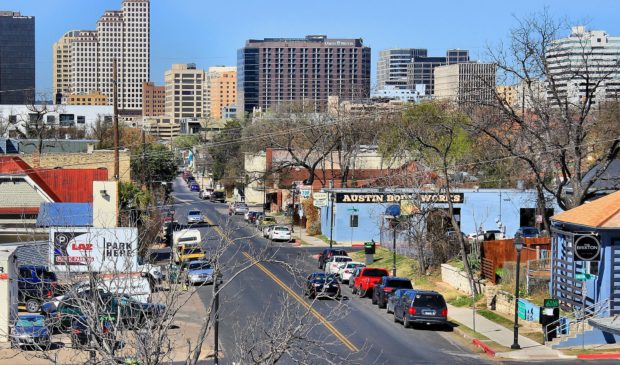East Austin’s boom: What to do? And how to do it?
Tuesday, August 30, 2016 by
Elizabeth Pagano As a first, necessary step toward addressing East Austin’s growth, the Planning Commission continues to look for a way to get a handle on the conversation about that growth.
Commissioner Nuria Zaragoza, who sparked the latest discussion on the subject at last week’s Planning Commission meeting, explained that her agenda item was based on a request from about 20 people from various east-side organizations. They had shown up at a previous Planning Commission meeting last year, with the intention of shining a light on how the area’s zoning had led to a de facto entertainment district in their neighborhood.
The Planning Commission attempted to follow up on the matter at a subsequent meeting last January, but turnout was thin. So now the issue is headed to the Small Area Planning Joint Committee with instruction that staff notify contact teams and neighborhood associations prior to the meeting. There, the groups will get started establishing some kind of framework or process that will help them identify and evaluate possible solutions to the problems that surround what seems to be an emerging entertainment district.
“I think everybody is in agreement that something needs to be done,” said Commissioner James Shieh. “The whole point is: Let’s just get these discussions going.”
Shieh suggested that, at a minimum, the Small Area Planning Joint Committee could be a “conduit” for some of the discussions already taking place and a way to organize potential solutions. Those discussions have been circulating through City Hall for a spell now. At the January meeting, the full commission considered the issue, but the only public comment was from an Austinite who didn’t see eye to eye with those most upset about recent developments. So it was sent back to the Small Area Planning Joint Committee, where public comment continued to falter. This time, the commission is trying again with the hope that explicitly notifying the contact teams will bolster turnout.
Some solutions have already been explored, like a proposed moratorium on new hotels and bars that was found to be fairly impossible to enact. In March, the Austin Monitor and KUT reported on an ultimately unsuccessful plan to inhibit development. But ideas about amending neighborhood plans, creating an overlay that prohibits certain land uses and, of course, working through CodeNEXT – the city’s project to rewrite the Land Development Code – persist.
“I don’t know that this is the highest priority in our city. But I do know that in the time I’ve been here, this is the one that keeps surfacing,” said Zaragoza. “I think we need to pay attention to it. It is different than what we are seeing in most other corridors, the change.”
Co-sponsor Tom Nuckols backed up this assertion and defended against the notion that those in Central East Austin were simply the squeakiest wheel in a city full of people with corridor problems.
“They are being a squeaky wheel, but I’m sympathetic to their squeaks,” said Nuckols. “Yeah, there will be ongoing neighborhood planning and corridor planning there, but that’s a long-term process. In the meantime, the market will plan that neighborhood, and the market will turn it into an entertainment district like Rainey Street.”
“I would say there are portions of it that already are,” said Chair Steve Oliver.
Commissioner Karen McGraw voiced support for a more focused neighborhood planning process and the promise of CodeNEXT.
“I hope that CodeNEXT is already working on this,” she said, “because I think this inappropriate zoning in these narrow corridors is a huge problem.” She said it might be a good idea to “flag” to CodeNEXT that there is a more appropriate zoning designation than Commercial Services for such corridors, which abut single-family homes.
Oliver said that yes, CodeNEXT might be a good place to address the issues raised, but he reminded commissioners that it would be four months until a draft code would be complete, and that draft would not include mapping.
“We’ve got a year-plus of working on the draft before we even know what resources we have to map very specific areas of town, which may or may not include this stretch,” said Oliver. “I think if there’s a pressing need, we need not rely on the cure-cancer-of-everything CodeNEXT.”
Photo by Larry D. Moore [CC BY-SA 4.0], via Wikimedia Commons.
The Austin Monitor’s work is made possible by donations from the community. Though our reporting covers donors from time to time, we are careful to keep business and editorial efforts separate while maintaining transparency. A complete list of donors is available here, and our code of ethics is explained here.
You're a community leader
And we’re honored you look to us for serious, in-depth news. You know a strong community needs local and dedicated watchdog reporting. We’re here for you and that won’t change. Now will you take the powerful next step and support our nonprofit news organization?









